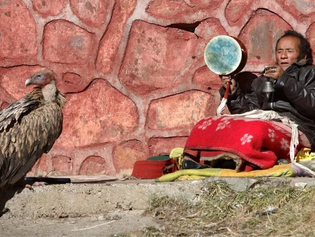Esoteric Buddhism is also known by the terms Mantrayana and Tantra. These teachings are secret and not available to everyone, whereas Exoteric teachings learned from books are accessible to everyone. The student of Esotericism must receive a proper initiation from a master or guru from a valid lineage of masters before him or her. Esoteric teachings have a mystical element, and are of a philosophical nature.
Esoteric Buddhism is widespread in Tibet, Bhutan, Northern India, Nepal, southwestern China, Mongolia, Russia in a form of Vajrayana Buddhism, and in Japan as Shingon Buddhism, Tendai Buddhism and Shinto Buddhism.
In Esotericism, the practitioner creates a special bond with a guardian Buddha, Bodhisattva, or deity during their initiations and eventually becomes spiritually united with that being. In Vajrayana Buddhism, this strongly characteristic practice is referred to as ‘Guru Yoga.’ Ritual formulae, such as mantras, mudras, meditation, and mandalas are essential devices enabling a shortcut to enlightenment.
The Esoteric secrets, rituals, and symbols evolved to enable the student to communicate with a spiritual Buddha, the Dharmakaya, the true nature of the Universe and to aspire for rapid enlightenment. In Exoteric practice, the focus remained on the historical or physical body of the Buddha, or Nirmanakaya, and enlightenment lay beyond the horizon in another lifetime.
The Origin of Rituals of Esotericism
Ancient Indians believed wholly in the supernatural and the natural world. They especially envied the characteristics of some animals. The peacock was one such creature they revered and desired to emulate, especially when they realised it could eat poisonous creatures and survive. They were gifted at communicating with the spiritual or invisible world, so they developed mantras (spoken or chanted formula) which emulated the peacock and brought the animal god closer to the human world. Then the concept of ‘poisons’ in general came to represent negative aspects of the human mind which required an antidote, mantras and invocations becoming viewed as antidotes.
Esoteric Sutras
The three principal sutras (scriptures) of Esotericism are the Mahavairochana Sutra, The Diamond Peak Sutra, and the Mahaparinirvana Sutra delivered from the deathbed of the Buddha. These are the core works of the three streams of Esotericism in Japan; the Shingon School, the Tendai School founded by Kukai’s peer Saicho, and the Shinnyo School founded by Shinjo Ito more recently.




